What to wear when hiking?
The perfect hiking outfit consists of comfortable hiking trousers, moisture-wicking base layers, an insulating jacket or vest, a waterproof raincoat for emergencies, a comfortable hiking rucksack, sturdy hiking boots and well-fitting hiking socks. Read on to find out what this means in detail and what to look out for when buying hiking clothing and equipment.

Trousers
Hiking trousers are the heart of any hiking outfit. They should be comfortable, durable, and breathable and are available in a variety of fabric combinations. Blends of natural fibers such as cotton or hemp are more comfortable, but dry slowly and offer little protection from the wind and rain. On the other hand, trousers made from synthetic fibers such as polyester, polyamide, and nylon are lightweight, dry quickly and offer better protection from the wind.
Hikers not deterred by prolonged rain can benefit from trousers with a waterproof membrane, or carry special rainproof trousers in their rucksack. Short rain showers are not a problem for regular trousers without a membrane, as they usually have a water and dirt-repellent (DWR) finish that prevents moisture from penetrating.
Zip-off trousers are flexible companions that can be transformed into airy hiking shorts in just a few steps. Some manufacturers, such as VAUDE, offer trousers in both long and short sizes.
Performance Underwear & Outerwear
Functional underwear, T-shirts, and other outerwear need to wick moisture away from the skin and dry quickly to prevent you from cooling down too much or even help you stay cool on hot days. They are made from a variety of materials such as merino wool, polyester, or polypropylene. Merino wool is particularly soft and odorless, while clothing made from synthetic fibers dries quickly and wicks moisture away. Outdoor clothing made from a blend of merino wool and synthetic fibers combines the best of both materials. On cooler days, mid-layers such as fleece jackets or hoodies provide optimal warmth. Thinner or thicker fleece qualities are available, depending on your warmth requirements.

- - 10 %new
 LowaInnovo GTX Mid Hiking & Trekking Boots Navy / Arktis WomenMSRP 199,95 €179,95 €Available Sizes:EU | UK | US | CM4,55,05,56,06,5
LowaInnovo GTX Mid Hiking & Trekking Boots Navy / Arktis WomenMSRP 199,95 €179,95 €Available Sizes:EU | UK | US | CM4,55,05,56,06,5 - - 10 %new
 VaudeAgile Air 20 Backpack Baltic SeaMSRP 89,95 €80,95 €One size
VaudeAgile Air 20 Backpack Baltic SeaMSRP 89,95 €80,95 €One size
- new
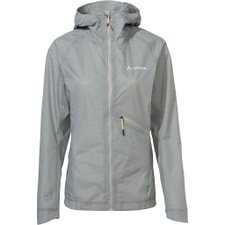 VaudeScopi 2.5 L Rain Jacket Lightgrey Women249,95 €Available Sizes:36384042
VaudeScopi 2.5 L Rain Jacket Lightgrey Women249,95 €Available Sizes:36384042
- new
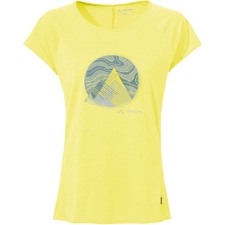 VaudeTekoa II T-Shirt Mimosa Women44,95 €Available Sizes:3638404244
VaudeTekoa II T-Shirt Mimosa Women44,95 €Available Sizes:3638404244
- new
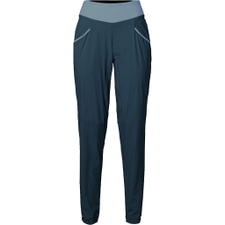 VaudeScopi LW Pants Dark Sea Uni Women99,95 €Available Sizes:36384042
VaudeScopi LW Pants Dark Sea Uni Women99,95 €Available Sizes:36384042
- - 18 %
 Black DiamondWomen's Trail Ergo Cork Telescopic Pole WomenMSRP 109,95 €89,95 €One size
Black DiamondWomen's Trail Ergo Cork Telescopic Pole WomenMSRP 109,95 €89,95 €One size - new
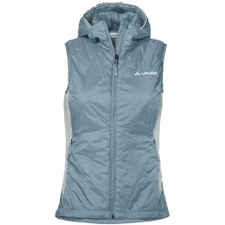 VaudeFreney Hybrid IV Vest Nordic Blue Women124,95 €Available Sizes:36384042
VaudeFreney Hybrid IV Vest Nordic Blue Women124,95 €Available Sizes:36384042 - new
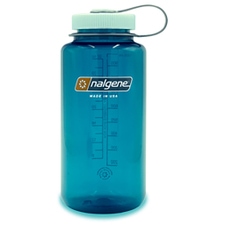 Nalgene1,0 L Sustain Wide-Mouth Bottle Trout16,95 €One size
Nalgene1,0 L Sustain Wide-Mouth Bottle Trout16,95 €One size

Insulated vests and jackets
An insulated vest is ideal for cooler days or for use in the mountains where temperatures tend to fluctuate. They need to be light, warm, and breathable. Outdoor & hiking vests come in a variety of materials, such as down, wool or synthetic fibers. Down vests are particularly light and warm, but lose their insulating properties when wet. Synthetic fiber vests made from insulating materials such as PrimaLoft® are less sensitive to moisture and insulate well even when wet. This is particularly useful when traveling in rainy and humid areas.
If you expect low temperatures during your trek, insulated jackets are a better choice. Insulated jackets are available with different fillings such as synthetic fibres, down, or even wool (SwissWool or Lavalan).
Hybrid constructions use the body mapping principle to provide warmth in key areas, while other areas are equipped with stretch material for greater freedom of movement or mesh for optimum ventilation.
Rain jackets and windbreakers
A hardshell jacket is an essential piece of clothing for walking on rainy days or when you expect the weather to change on longer hikes or in the mountains. These membrane jackets come in a range of water columns - how much rain and pressure the material can withstand before water seeps through.
For short hikes without or with a light backpack, a jacket that is designed to be lightweight and usually a little cheaper will do. For multi-day treks with more gear in your backpack, it is worth investing in a more robust model with a higher water column. It is also important that membrane jackets have ventilation zones to prevent overheating.
On windy but not rainy days, a windbreaker may be an option. Windproof jackets are much lighter and more breathable than rain jackets, and the fine but tightly woven structure of the fabric protects you from getting too cold.


Hiking backpack
Hiking backpacks come in a range of sizes and capacities. Manufacturers such as Ortovox and Deuter offer rucksacks with different back lengths so that the rucksacks fit smaller people perfectly. A smaller backpack with 20-30 litres is sufficient for day trips and a larger backpack with 40-70 litres is sufficient for multi-day trips.
The rucksack should have ergonomically designed, padded shoulder straps and a hip belt to distribute the weight evenly. The heavier the pack, the more important this is. A well-ventilated back increases comfort. Most rucksacks can withstand short showers thanks to their water and dirt-repellent finish. For particularly wet days, consider a rain cover, which is included in some designs or available separately.
For a quick evening hike or a speed hike, hip bags are great for carrying just the essentials. Some hip bags come with a hydration system.
Hiking boots
Nothing spoils the experience more than ill-fitting hiking boots. That's why it's important to take your time when trying on and choosing your hiking boots. Manufacturers use different lasts – some offer boots specifically for narrow or wide feet.
Leather boots are particularly strong and durable, but they are also heavier. Synthetic fibre boots are often lighter and more breathable but may be less durable. Good quality boots can usually be resoled – extending their life which helps save resources and money. And who wants to give away a well-worn and loved pair of walking boots? To learn more about hiking boots, read this blog post.
Hiking Socks
Wearing the right hiking socks is essential for a good hiking experience. They should be comfortable, breathable, and wick away moisture. Hiking socks come in a variety of materials, including merino wool and polyester. Merino wool socks are particularly soft and odorless, while polyester socks dry quickly and wick moisture away faster. Compression socks are also available to help with the return of venous blood for greater comfort. Read more about the perfect socks for hiking in this blog post.





